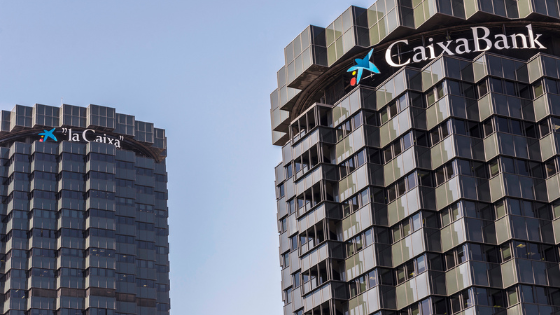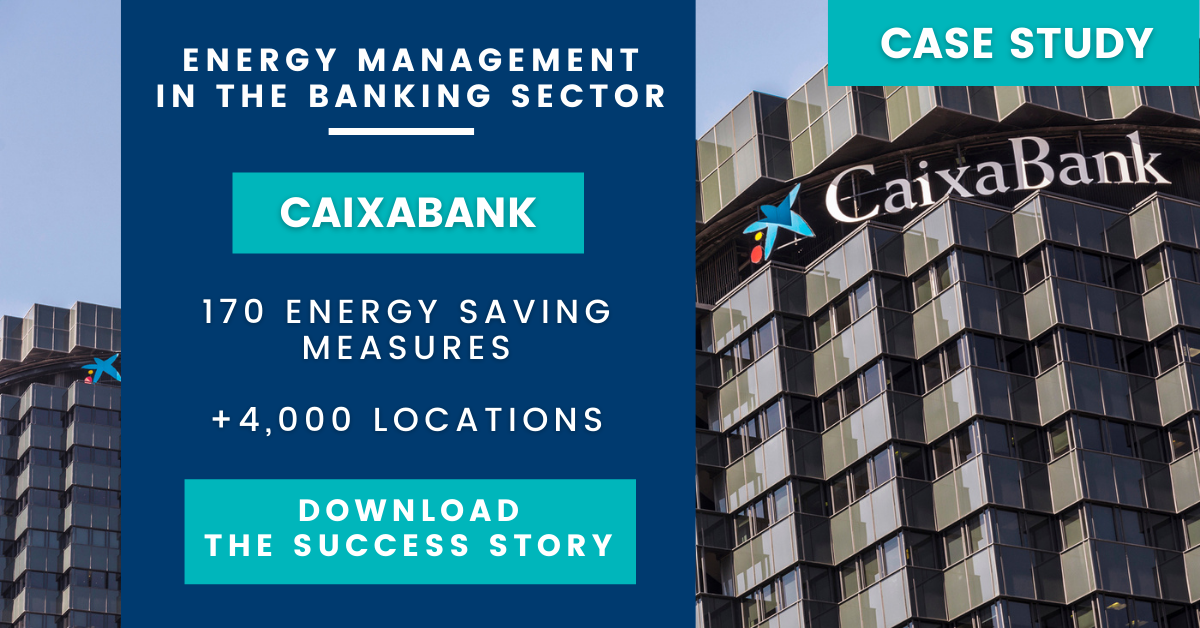Energy is everywhere in our lives and we rely on it daily without even realising it. When we walk into an office or bank branch, motion sensors or switches in every room turn on the lights, as well as the air conditioning or heating at the click of a button – it all happens with almost surprising simplicity.
Although we use energy constantly, we are not always conscious of the work and effort which lies behind it. Indeed, you probably don’t always think about your energy consumption or how you can reduce it while maintaining the comfort standard of your workspace.
In this article we talk about energy awareness and energy culture, focusing on the banking sector and with the fantastic example of CaixaBank.
What is Meant by Energy Culture?
Energy culture refers to patterns of behaviour, knowledge and awareness of energy use. This also includes savings and the impact that energy expenditure has on total costs and the environment. If you would like to learn more about this concept and deepen its meaning, read this previous article on energy behaviour.
The Importance of the Human Factor in Energy Management
Bank buildings and branches, as in other sectors, require a lot of energy, but it is ultimately people who consume it. Employees, customers, cleaning staff, maintenance staff, etc. And their awareness and energy culture are key to achieving results.
Even if you install certain automation or components with an Energy Management System (EMS) in your bank, it is not all about technology and software. Energy consumption is strongly influenced by personal preferences. For instance, there are those who want to work with all the lights on, those who are hot or cold right away, or those who prefer to keep the windows open even at the risk of getting cold or hot in order to have natural ventilation. You can surely think of real cases of colleagues or employees. For example, during the covid-19 pandemic, supporters of constant ventilation even at the risk of getting cold were common.
Thus, we see that energy consumption is based on the needs of the users as well as those of the company. For professional service reasons, in banks, energy consumption for lighting, computers and ATMs is needed for the proper functioning of the service, whilst air-conditioning and heating to keep staff comfortable in the space. Not forgetting various elements such as coffee or vending machines, and hand dryers in the toilets, among others.
Users interact with energy and control it partially. Therefore, it is vital to acknowledge that workers will always seek maximum comfort to carry out their work in the most favourable conditions, whether it implies regulating temperature, lighting or ventilation.
In addition, by managing electronic equipment, each employee contributes to energy consumption and can implement energy-saving gestures, for example, by switching off computers at the end of the day instead of leaving them on standby all night. Employees are a central element in achieving efficient energy use, as the final management of consuming equipment falls under their responsibility.
Case Study: CaixaBank
CaixaBank is one of the most important banks in Spain, with thousands of employees, branches and offices throughout the country. Their Facility Management team have set a series of objectives to guarantee the comfort of their employees and customers, reduce the energy consumption of their facilities and reduce maintenance incidents to the minimum possible.
With more than 4,000 office and building sites, it was a major energy challenge successfully met.
CaixaBank’s energy efficiency project is wide-ranging and affects all areas. Some key points include:
- Detection of potential savings and optimisation of power
- Analytics and incident identification services
- Energy awareness
As you can see, energy awareness is one of the strongest elements of the project, which is quite normal in a company with thousands of workers and entities where it is necessary to implement changes. Download the CaixaBank success story here to find out all the details of the progress.
In the following section, find ideas to make your energy awareness strategy as successful as theirs:
How to Implement the Energy Awareness Strategy in your Bank
1. Identify Key Energy Efficiency Measures and Targets in your Bank
First, start by identifying the right measures and where to implement them. These include air conditioning, lighting and equipment, as well as the possibility of automating on/off times. This task is likely to be carried out with the advice of the Facility Management team, energy managers, or external professionals. In the case of CaixaBank, DEXMA worked together with the Facility Management team to develop the project, helping with the detection of potential savings and with the energy awareness strategy, among others.
After consulting with both internal and external energy professionals and starting to plan your energy efficiency strategy, it is time to involve your employees. Alternatively, this could be done earlier, but getting the support of professionals will help your message get across.
2. Internal Communication to Promote Transparency and Energy Consumption Habits
Some information and participation activities could be the distribution or the display on the intranet of regular reports, which can include everything from current consumption to reduction targets, as well as indications and tips for savings. This action should be done on a regular basis, especially if there is a high turnover of employees. For instance, at CaixaBank, more than 25,000 people receive regular energy awareness reports.
In addition to such information and advice, publishing success stories to give visibility to those who are doing well can motivate more employees to keep improving.
Before communicating your energy management plans, there are certain aspects that need to be considered to be as realistic as possible and not to demand too much from your employees:
- Workers don’t usually have a technical background, thus must be given a correct and easy way to understand how to manage the facilities.
- Employees cannot be asked to reduce consumption if their equipment (climate or lighting) is not working properly and requires replacement or maintenance.
- Feedback should not be negative, even if the results do not go as expected the message should always be focused on achieving the objectives and motivating.
- Transparency is key: employees should be offered tools and information about what is happening
- The monitoring should not only reflect the evolution of the consumption (better or worse) but should also include advice for improvement, congratulations and comparisons with other offices or the global vision of the office area or the entire portfolio so that they do not feel alone on the road to savings.
- In the case of offices, not only employees should be involved in energy management: cleaning staff or even staff in charge of replenishing the cash dispensers must also be taken into account and need to be clear about how they should operate when they come to work.
3. Gamification
Once the first communication phase is done and the protocols, regularity and type of information to be shared have been established, it is time to take it a step further. Gamification strategies such as quizzes or challenges can be a viable option to engage your employees directly by setting goals.
Gamification, such as benchmarking between different offices, can be very useful as a motivator, either because of rivalry or, on the contrary, because of emotional ties with former colleagues, for instance.
In general, internal figures or workers responsible for groups of offices, based on geographic area, type, size, etc. are designated. They play an important role in the monitoring and motivation of each office. The fact that each of these staff members receives a periodic report or has a scorecard to see which offices are improving and which are not, can become a recurring issue in the periodic meetings they might have.
However, the idea is not a competitive game where those who do less are pointed at, but rather a way of highlighting individuals or offices that are committed, encouraging a healthy comparison with clear results. This phase is optional, depending on your needs, but it can be one more gesture in the process toward energy savings.
Now that you have seen these steps, are you ready to implement an energy awareness strategy and energy-saving measures in your bank or financial institution? Download the CaixaBank case study to find out how they have done it, and contact us if you want to know more about how to get started in your particular case.




